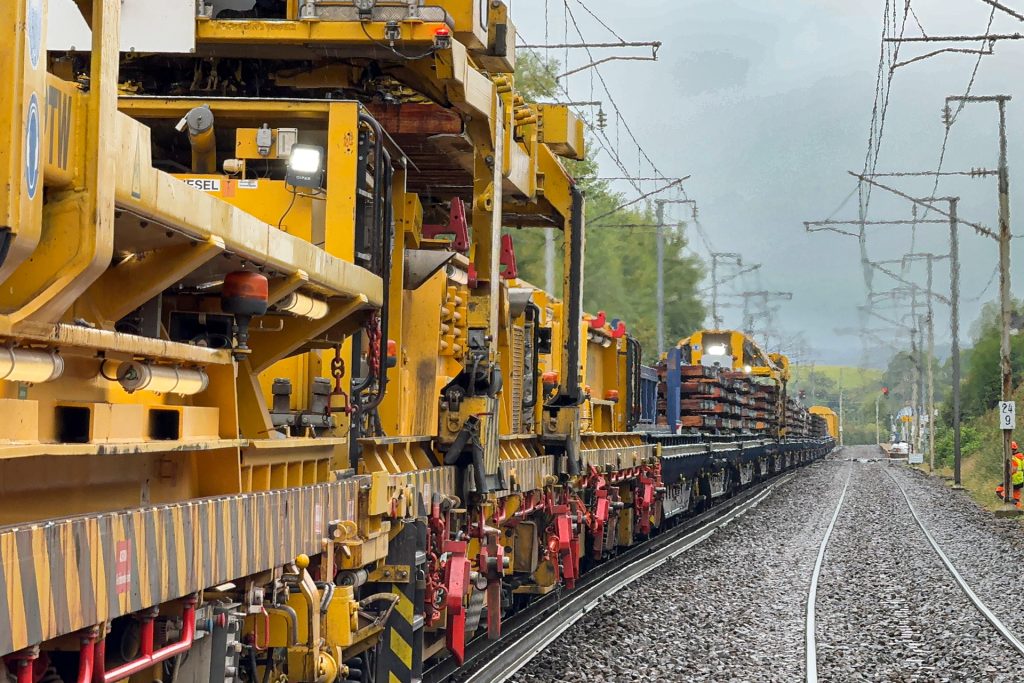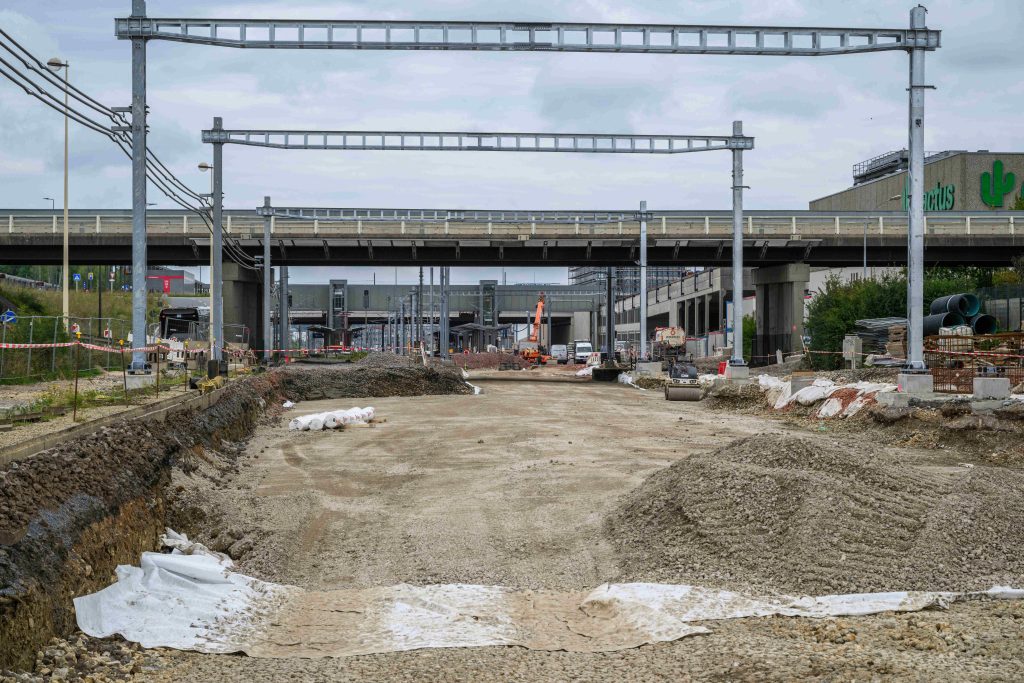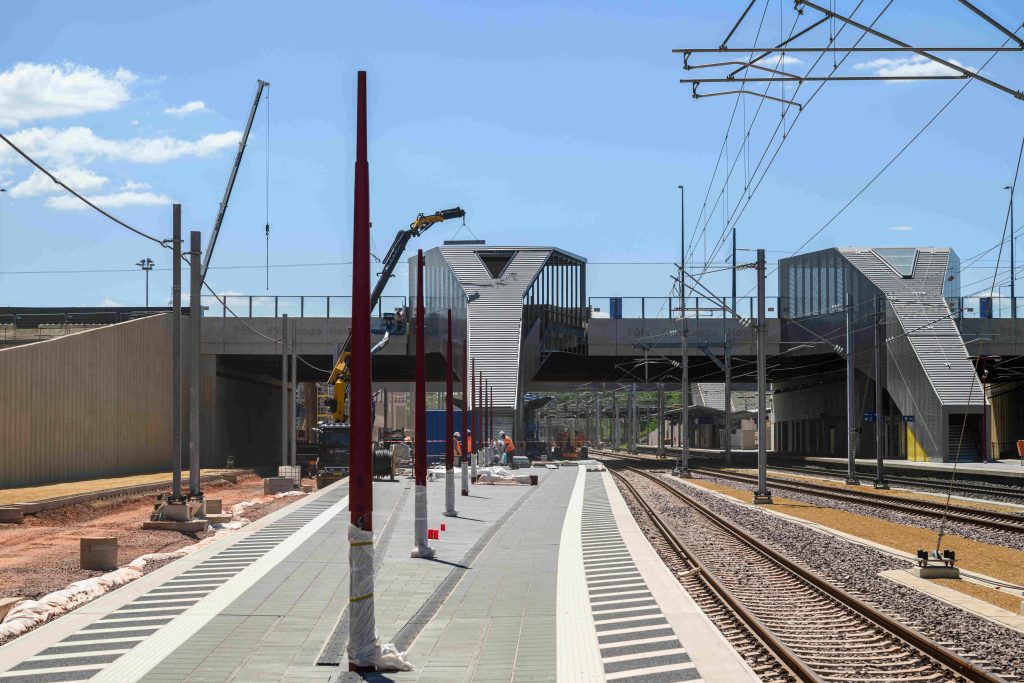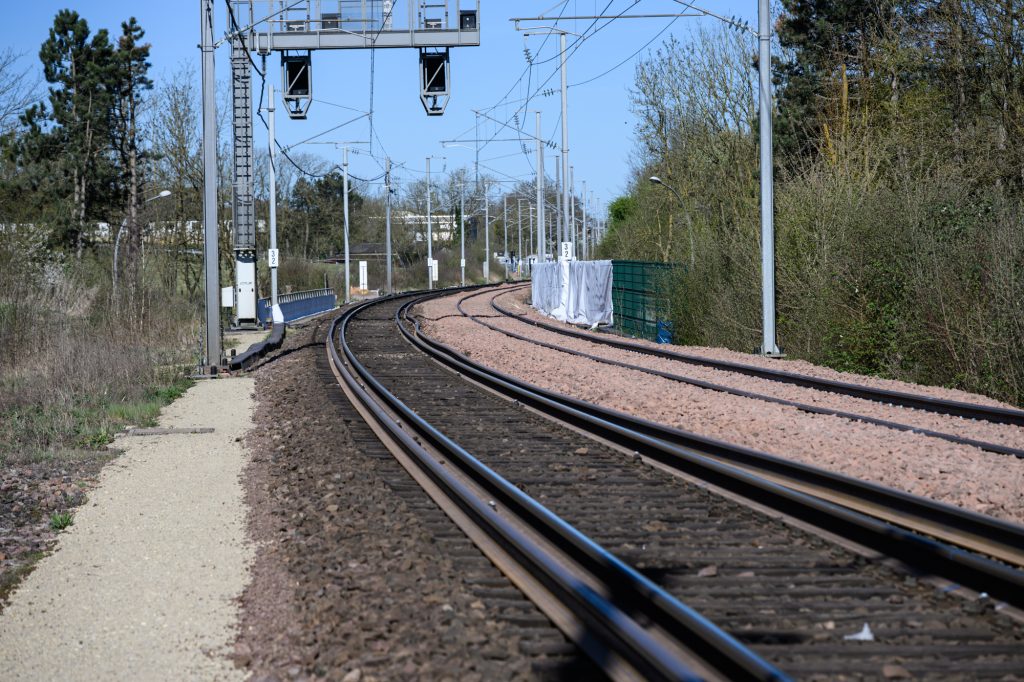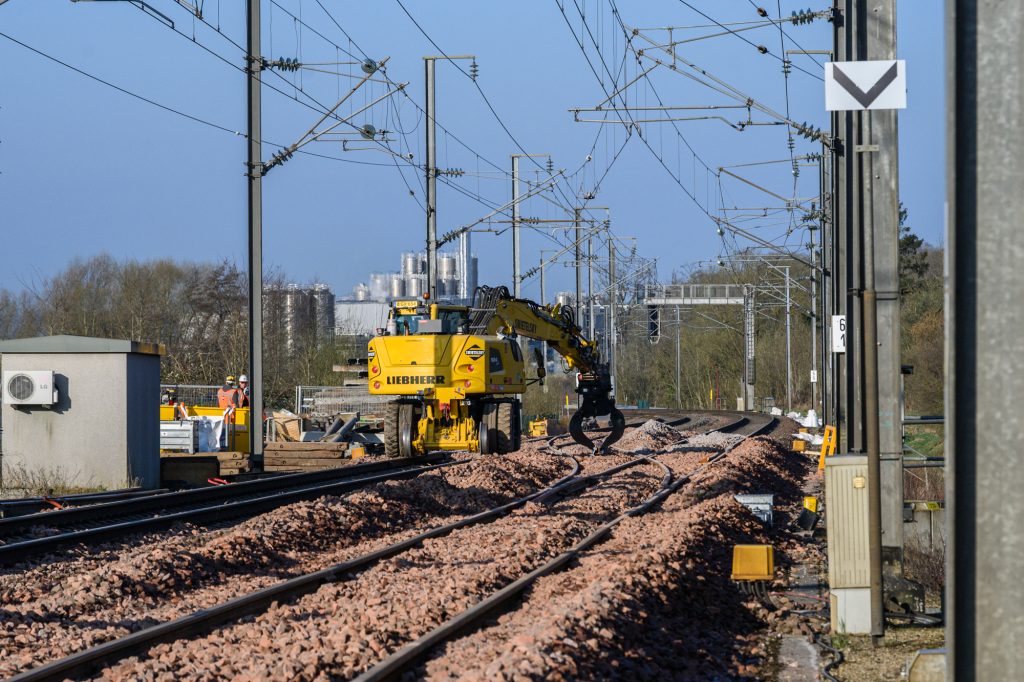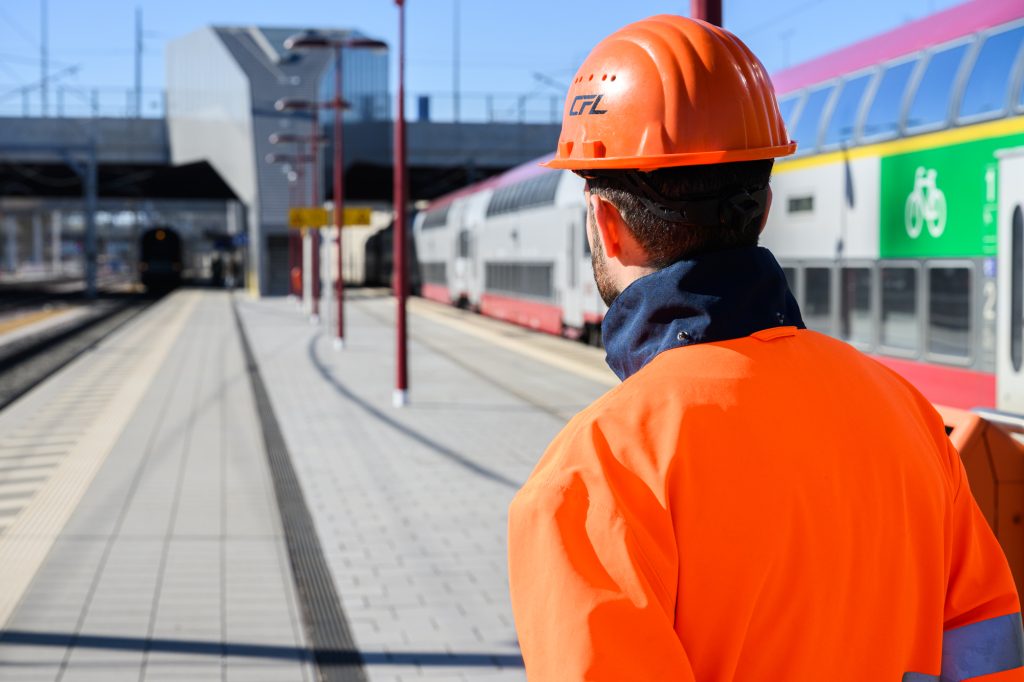
The ballast plough: A ballast redistribution working machine
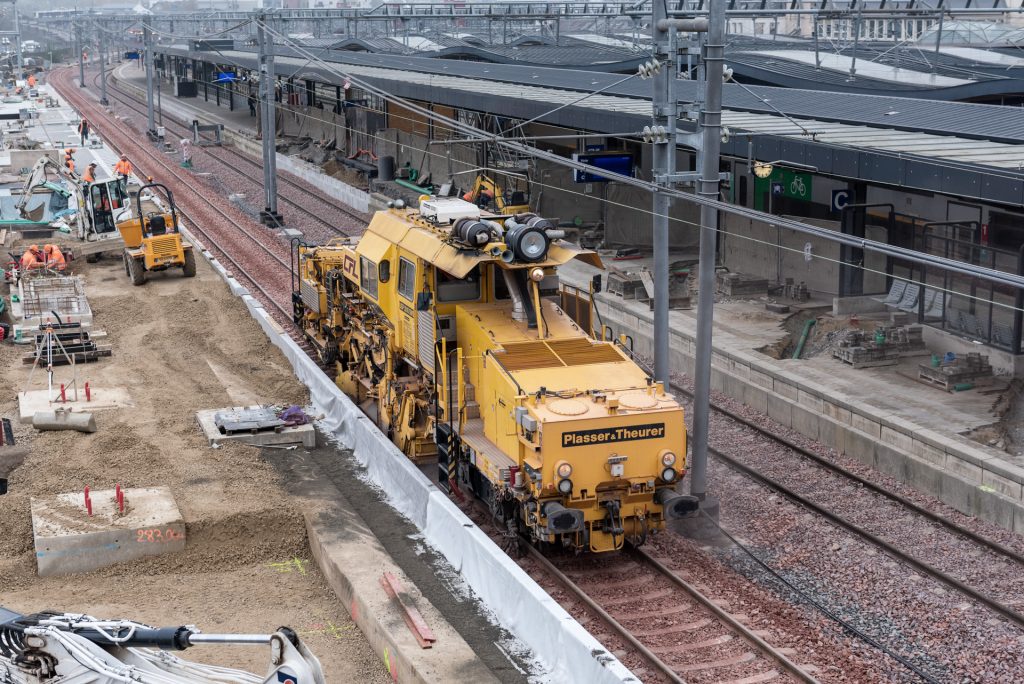
To ensure that customers can travel comfortably and safely by train, the CFL works non-stop on the maintenance and modernisation of Luxembourg’s rail network. Heavy machinery is used to help the CFL employees with this work. In a series of blog articles, we will give you an insight into the world of these strong and unique technical helpers. Today: the ballast plough.
Every year, the CFL distribute an average of 10,000 tons of ballast for maintenance and repair work. A considerable amount of stones, especially if you had to distribute them by hand. For fast and efficient work on the track, the CFL owns a so-called ballast plough.

Ballast ploughs are working machines, which are responsible for distributing the ballast in the track bed after tamping work and for filling the tamping holes. During tamping work, unevenness and displacements of the tracks are levelled out with new ballast and the ground is stabilised and made more compact. The function of the ballast is to give the track a support and hold it in position. It dampens the movement of the train and thus guarantees the customer smooth running and more comfort.
How does the ballast plough do this?
For this important work, the ballast plough is equipped with two lateral arms and a central plough under the machine, with which it moves over the track. First, new ballast is added from a ballast wagon in and around the track. The ballast plough then pulls the ballast into the track and distributes it with the central plough. A large broom at the end of the machine ensures that excessive ballast is picked up and either deposited in a silo or spread to the side of the track. The quantity of ballast to be distributed depends on the respective track conditions and loads bearing capacities. The necessary replenishment is ensured at all times; the machine’s silo can load up to 10 cubic meters of ballast, which corresponds to about 14 tons of ballast.
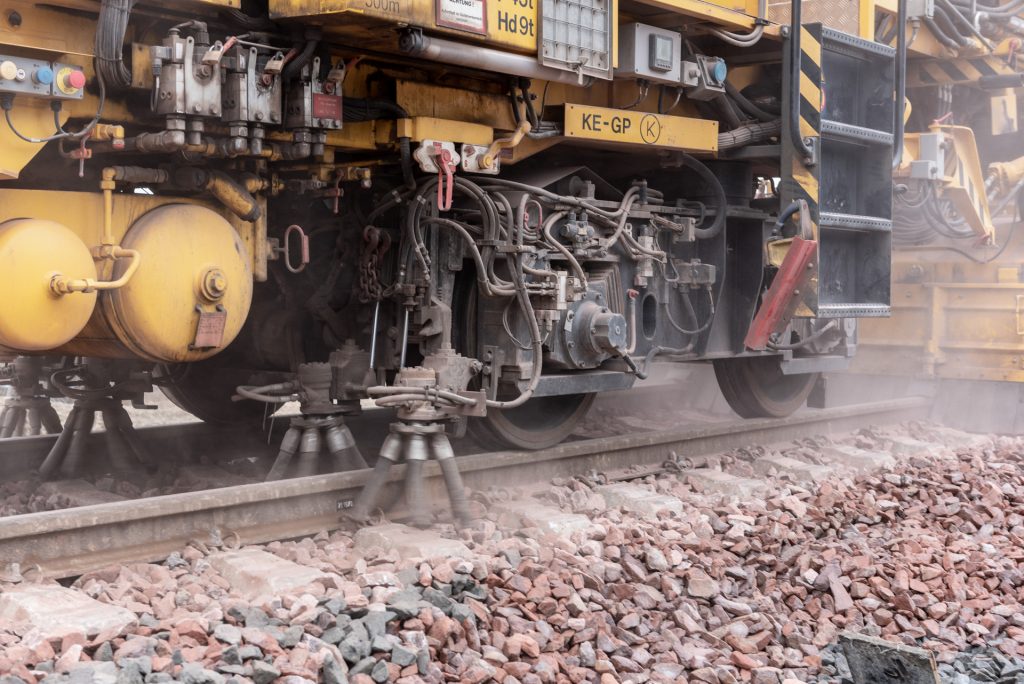
The ballast plough and its summer rush hour
The ballast plough is mainly used when construction sites are completed, in particular for clearing work and for spreading the ballast in accordance with standards. It is also particularly important in summer. Similar to the sleepers, the ballast absorbs a lot of heat, especially in summer. If there is not enough ballast in the track bed at this time of the year, rails can expand and slightly deform due to the very strong heat. A circumstance that very rarely occurs, due to the regular use of ballast wagons, tamping machines and ballast ploughs.
As a further safety measure, the temperature of the tracks is permanently measured and controlled by means of temperature measuring points in Mecher, Luxembourg City and Esch-Alzette, so that problems can be prevented or, in case of an emergency, action can immediately be taken.
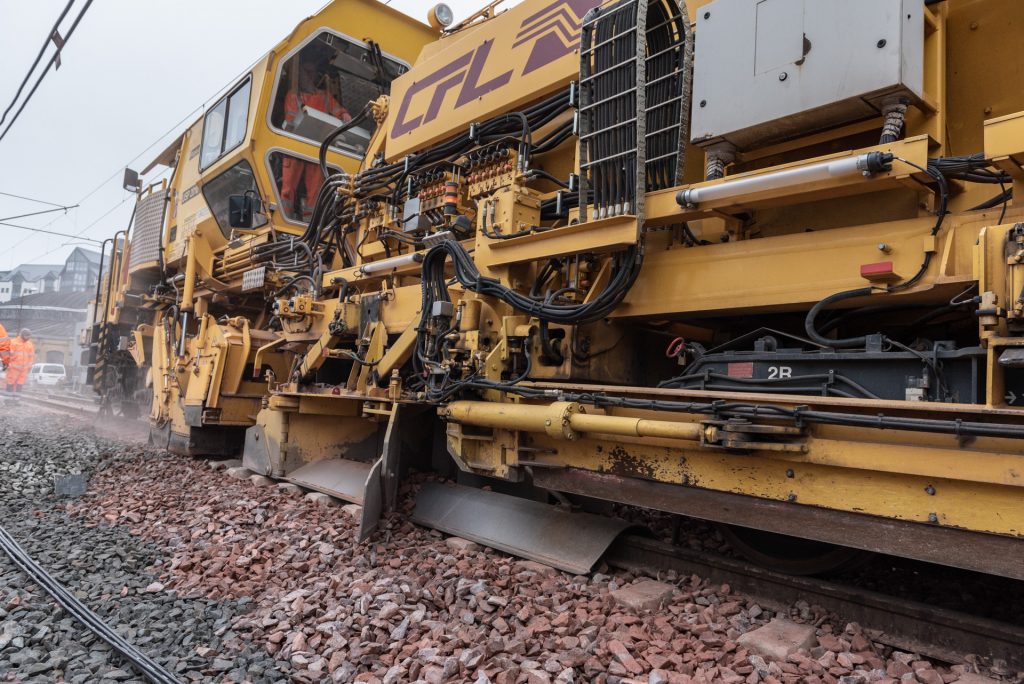
Teamwork is key
Work with a ballast plough requires the presence of at least 3 people on site at all times. Two people drive the machine and check, first of all, that enough ballast has been distributed, and secondly, that it has been placed on site in accordance with the regulations. A third person runs ahead and checks that the track is clear. In places where, for example, cables or switches lie in the track, the ballast plough must be lifted to avoid damage. In such places, the ballast is then adjusted manually.
